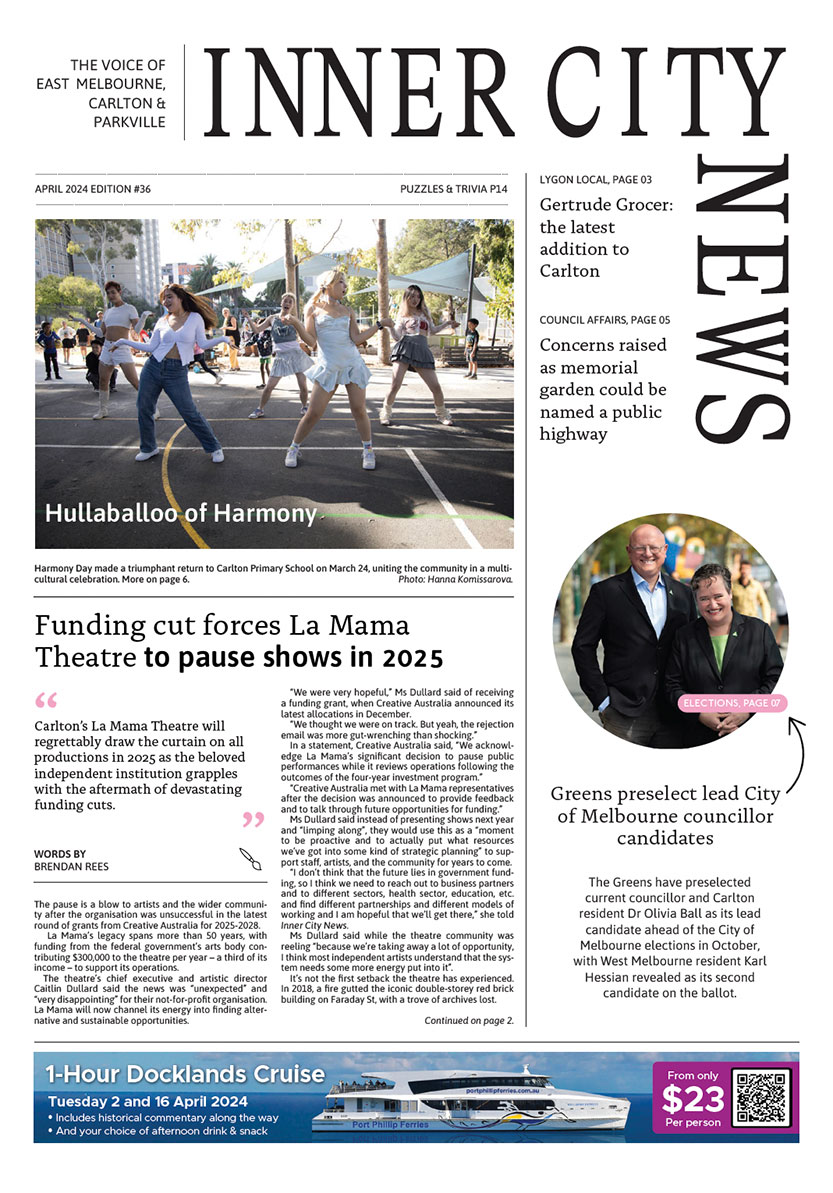Healthy habits, happy animals
Words by Bianca, animal training coordinator
How do you get a giant tortoise to step on to scales to be weighed? How does an elephant learn to lift its feet for a nail trim? How can we teach a gorilla to present their shoulder for an injection?
As Melbourne Zoo’s animal training coordinator, these are the questions I’m asking myself every day. In my job I get to work with animals of all shapes and sizes, and I reckon it’s the best job at the zoo!
At the moment I am working with orangutans, a rhinoceros iguana, some Tasmanian devils, a snow leopard, elephants, wombats, a cormorant, a fur seal and so much more. My job is to manage all the animal training programs happening at the zoo and coach our keepers in those programs. Most of what we are doing is teaching animals to voluntarily participate in their own healthcare.
Yep, our animals are learning how to keep themselves healthy! And a lot of this training happens out on display around the zoo grounds. So next time you’re at the zoo, feel free to stop and watch one of our training sessions.
We do a lot of healthcare training at the zoo. It’s is one of the main reasons we have so many training programs, because we want the animals to be active participants in their own healthcare. We want them to have a voice, and we want them to have choice and control over participating in those sessions.
We know that over the course of an animal’s life they will need to visit the vets – maybe for a vaccination, for a blood draw, for an ultrasound or to receive antibiotics or another medication. Vets and keepers also need to keep an eye on the weight of animals so they can monitor their health and calculate any medicine dosages.
When animals choose to participate in their own healthcare it means we don’t need to restrain them, we don’t need nets and we don’t need darts for them to get that anaesthetic, that medicine, that check-up or that weigh-in.
So how do we achieve this?
I can’t talk to animals, but the way I communicate with animals is by observing their behaviour, and reading what their behaviour is telling me. I think of behaviour as an animal’s superpower. Simple things like setting up a safe, natural environment for training or providing some of their favourite foods lets us unlock their behaviour superpower to achieve an important healthcare outcome. That’s where our training programs come in. And you wouldn’t believe how quickly our animals learn! I have been working with animals for years and I am still constantly amazed by them.
Sometimes a behaviour we think might take months to learn – like a penguin presenting its nail for a trim, or a giraffe choosing to lower its head for an tooth X-ray – takes just a few weeks, or perhaps even less. With the help of positive reinforcement, our animals are such amazing learners.
The key to this is trust. It’s like a bank account. We put a lot of deposits in the trust account by giving them control during training. Our animals always have the choice to leave a training session, they are never punished if they choose not to participate, they will still get their balanced diet even if they don’t take part. But we find that sometimes it only takes a couple of training sessions to build up enough trust for them to voluntarily participate, and often enthusiastically. We just literally step back and watch them step on to the scales, or present that body part to the vet. And only then do we step in with special food items to positively reinforce that behaviour.
It’s always important to remember that just as with us humans, all animals are individuals. Not all meerkats behave in the same way. Not all Tasmanian devils learn at the same pace. When we are working with animals it’s always a study of one, that one animal in that one context at one point in time. And we always respect our animals as individuals. They’re all different and we’re always learning.
I was asked recently what I have learnt from working with animals over the years. A big thing is that I’ve learnt never to underestimate them. Our animals are learning at an extraordinary rate, a rate that often surprises and delights me. Our animals show us that when we give them choice and control and when there is positive reinforcement, then we see learning go through the roof, and animals progressing so much more quickly than we anticipated. It’s often a case of us trying to keep up with them! •

Carlton language school championed by Ukrainian refugee




 Download the Latest Edition
Download the Latest Edition